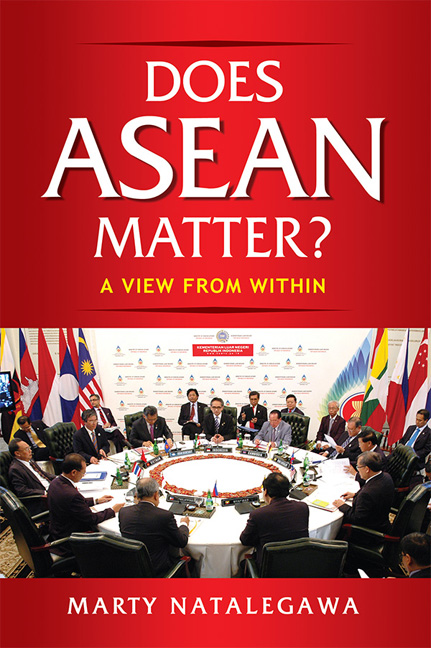Book contents
- Frontmatter
- Dedication
- Contents
- Introduction
- 1 Statecraft and Diplomacy in a World Transformed: 1967–2017
- 2 Southeast Asia: From Trust Deficit to Strategic Trust
- 3 ASEAN and the Region: From Cold War Pawn to ASEAN Centrality
- 4 From State-centric to People-centred ASEAN
- 5 ASEAN: Wither or Prosper?
- Appendix 1 Guidelines for the Implementation of the DOC
- Appendix 2 Declaration of the East Asia Summit on the Principles for Mutually Beneficial Relations
- Appendix 3 Statement of Asean Foreign Ministers on Asean's Six-Point Principles on the South China Sea
- Index
- About the Author
- Plate section
4 - From State-centric to People-centred ASEAN
Published online by Cambridge University Press: 08 June 2019
- Frontmatter
- Dedication
- Contents
- Introduction
- 1 Statecraft and Diplomacy in a World Transformed: 1967–2017
- 2 Southeast Asia: From Trust Deficit to Strategic Trust
- 3 ASEAN and the Region: From Cold War Pawn to ASEAN Centrality
- 4 From State-centric to People-centred ASEAN
- 5 ASEAN: Wither or Prosper?
- Appendix 1 Guidelines for the Implementation of the DOC
- Appendix 2 Declaration of the East Asia Summit on the Principles for Mutually Beneficial Relations
- Appendix 3 Statement of Asean Foreign Ministers on Asean's Six-Point Principles on the South China Sea
- Index
- About the Author
- Plate section
Summary
ASEAN's transformative impact can be recognized in how it changed the dynamics of the region (chapter 2) by securing strategic trust among Southeast Asian countries that was previously absent, and by altering the dynamics of its relations with the rest of the world (chapter 3), asserting the centrality previously denied it. But the previous fifty years have also been significant in witnessing the promotion of the so-called “people-centred” ASEAN. The 1967 Bangkok Declaration and the 2007 ASEAN Charter, for instance, are a study in contrasts — reflecting ASEAN's evolution hitherto unforeseen. While the Bangkok Declaration made scant reference to “peoples”, it is a constantly recurring theme in the latter. Indeed, in marked contrast to the Bangkok Declaration, the 2007 ASEAN Charter begins: “WE THE PEOPLES of the Member States of the Association of Southeast Asian Nations (ASEAN)…”.
Today, promoting a “people-centred” and “people-oriented” ASEAN has become as much a part of ASEAN lexicon as the so-called “ASEAN way” in describing intra-ASEAN relations and “ASEAN centrality” in depicting ASEAN's role in the wider region. A people-centred ASEAN may be viewed as a “process” and outcome. The former refers to the engagement of non-state stakeholders in determining policy priorities, policymaking and policy implementation; in other words, the development of peoples’ sense of participation in and ownership of ASEAN affairs. The latter, as an “outcome”, refers to the extent to which ASEAN has had an impact on its peoples at large. In short, is ASEAN making a difference in areas that matter to its peoples?
People-centred ASEAN: It's Always the Economy
Without doubt one of the clearest illustrations of ASEAN's transformative impact — its positive impact on the peoples of Southeast Asia at large — has been in the economic domain. The Southeast Asia of 1967 bears little resemblance to the one that prevails today — fifty years after ASEAN's inception.
Some key indicators illustrate the magnitude of the transformation. ASEAN's combined estimated GDP (US$ at current prices) in 2016 stood at US$2.55 trillion (sixth largest in the world, or third in Asia, if it were a single economy), four times the level in 1999 when ASEAN 10 was achieved (US$ 576,519 billion) and in sharp contrast to the level in 1967 at US$22,542 billion. Meanwhile, its combined GDP per capita in 2016 stood at US$4,021, in contrast to figures in 1999 and 1967 of US$1,135 and US$122, respectively.
- Type
- Chapter
- Information
- Does ASEAN Matter?A View from Within, pp. 164 - 227Publisher: ISEAS–Yusof Ishak InstitutePrint publication year: 2018

